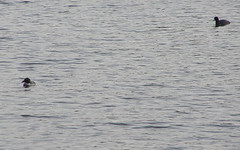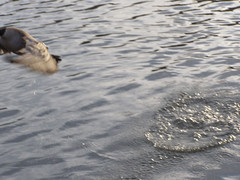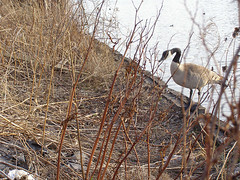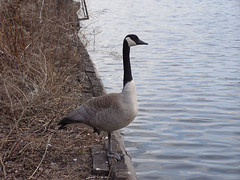
The Center for Land Use Interpretation in Los Angeles has a new exhibit and book entitled The Birdfoot which spotlights the geography of the Mississippi Delta where the river meets the sea. Near its mouth, the river splits into several channels, so that when seen from the air the landscape resembles the leg and splayed toes of a bird.
When I was in New Orleans I'd thought about visiting this area, but a rental car agent told me there was little to see there. In a way he was right, because much of the area is inaccessible by road and not easily understood by the casual visitor. But fortunately the CLUI has researched and explored the Birdfoot by car, boat and air, and presents the story in a slide presentation tour.
The end of any river is a mysterious landscape of half-land, half-water. In its natural state the river and the sea and the new land are in flux, a triangular balance of silt and tide and flood creating temporary landscapes without solidity.
Starting at Venice, where the road ends, the photo tour moves downriver with stops at various outposts of industry and marinas set in wide isolated swamps and marshy forests. Though these scattered signs of human activity are are nearly overgrown in the fecundity of tropical greenery, the Mississippi Birdfoot is no Eden.
Instead it is scarred by countless channels cut through the marshes used by industry. It is probed by oil exploration wells and natural gas pipelines. The levee system first built in the 1870s opened the river to modern shipping traffic, but cut off the surrounding marshlands from the flood borne silt that replenished them. This sinking landscape is exposed to storms and hurricanes, eroding it further, leaving only the artificial high ground of the levees. The spindly toes of the Birdfoot only become more distinct with every storm.
One by one the tour passes the lonely settlements of Tidewater, Trappers Canal, and Pass a l'Outre, seasonal hunting camps, tank farms and oil depots. In the stilted dwellings of Pilottown, riverboat pilots await their turn to take ocean vessels up the Mississippi to New Orleans and Baton Rouge.
One by one the signs of humanity are left behind as the tour follows the Southwest Pass navigation corridor. The land falls away on all sides. Now the sky is taking on the deep ocean blue of the Gulf of Mexico just ahead, in anticipation of that mystical reunion of river and sea. Beyond one last industrial structure, a bunking place for riverboat pilots, and there are the jetties that guide the ships and direct the river current to keep the channel scoured clear of silt. Venturing on beyond the land, simple posts mark the passage until it gives way to the endless horizon of the open sea.
The Center for Land Use Interpretation
9331 Venice Blvd.
Culver City, California




